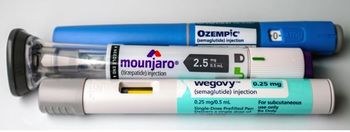
The Journal of Respiratory Diseases
- The Journal of Respiratory Diseases Vol 28 No 6
- Volume 28
- Issue 6
More patients may benefit from this new therapy Sublingual immunotherapy, part 2: Safety and practical considerations key words: Immunotherapy, Allergy, Allergic rhinitis
abstract: In the treatment of certain allergies, sublingual immunotherapy (SLIT) may represent an attractive alternative to subcutaneous immunotherapy (SCIT) because of its lower risk of systemic reactions. The most common adverse reactions are local symptoms, such as oral "itchiness." GI complaints, rhinoconjunctivitis, urticaria, and asthma are uncommon reactions to this therapy, and no fatalities have been reported. In contrast to SCIT, accelerated induction schedules for SLIT do not appear to be associated with an increased risk of systemic reactions. SLIT may present an opportunity for broadening the use of immunotherapy by extending it to patients who are not candidates for SCIT because they dislike injections, find the frequent visits to the physician's office inconvenient, or are concerned with the safety of SCIT. The optimal effective dose and dosing schedule need to be established before a cost-benefit analysis can be performed. (J Respir Dis. 2007;28(6):237-243)
Subcutaneous immunotherapy (SCIT) has been shown to be effective in managing allergy symptoms in select patients. However, it has the disadvantage of requiring administration in a medical facility because of the risk of adverse reactions. Sublingual immunotherapy (SLIT) may represent an important alternative. One of the purported advantages of SLIT over SCIT is greater safety, which would allow for home administration. Although there is no FDA-approved formulation for SLIT in the United States, an approved formulation may be available in the near future.
In the April 2007 issue of The Journal of Respiratory Diseases, I reviewed the evidence concerning the effectiveness of SCIT in the treatment of allergies. In this article, I focus on the safety of SCIT. I will also review the potential use of SLIT for non-inhalant allergies, such as latex allergy and food allergies, and practical considerations, such as treatment adherence.
SAFETY OF SCIT
Because of the potential risk of an adverse reaction, it is recommended that SCIT be administered in a medical facility with trained staff and appropriate medical equipment to recognize and treat systemic reactions to immunotherapy. The incidence of systemic reactions to SCIT varies greatly depending on several factors, including allergen dose and schedule, use of premedication, and patient selection. Generally, the incidence is higher during the "build-up phase," when the dose is being increased, than during the maintenance phase.
One review reported that the incidence of systemic reactions with conventional build-up schedules ranged from 0.05% to 3.2% of injections and 0.84% to 46.7% of patients (mean, 12.92% of patients).1 The highest rate occurred in a study of patients who were highly sensitive to ragweed.2 When this study was excluded, the rate of systemic reactions was 0.6% of injections (or less) and 0.84% to 28.6% of patients.
In a survey of fatal and near-fatal immunotherapy and allergy skin test reactions sent to physician members of the American Academy of Allergy, Asthma and Immunology (AAAAI), the incidence of unconfirmed near-fatal reactions was 23 per year (5.4 events per million injections) during 1990 to 2001.3 The estimated fatality rate was 1 per 2.5 million injections (an average of 3.4 deaths per year),4 which is similar to 2 previous surveys of AAAAI physician members, which date back to 1945.5,6
SAFETY OF SLIT
In the studies reviewed by the SLIT Joint Task Force, there was considerable variability in the amount of information on adverse treatment-related events, ranging from general statements such as "no relevant side effect" to a detailed breakdown of adverse events.7 One consideration in evaluating the safety of SLIT and comparing it with that of SCIT is that the treatment is administered at home and information on adverse reactions depends on the patient's reporting accuracy.
The studies reviewed involved single or cross-reacting allergens; none included multiple non-cross-reacting allergens. It should also be recognized that there has been little reported use of SLIT in patients with severe asthma.
Incidence of adverse reactions
Sixty-six studies reviewed by the SLIT Joint Task Force provided some information about SLIT- related adverse events. Most of the studies did not report the specific number of doses; the number of doses was estimated based on calculations from the immunotherapy schedules, treatment duration, and the number of enrolled patients and dropouts.
No fatalities were reported in the approximately 1,181,654 doses administered to 4378 patients. The estimated systemic reaction rate was 0.056% of administered doses, which is about 10-fold less than the rate reported for SCIT. In the double-blind, placebo-controlled studies, 3% of SLIT-treated patients withdrew because of adverse effects, compared with 1.4% of the placebo-treated patients. Lack of efficacy was the most common reason for withdrawal from the placebo group, and having adverse effects was the most likely reason for withdrawal from the SLIT group.
Types of adverse reactions
By far the most common adverse reactions to SLIT are local symptoms in the oral cavity. Abdominal complaints, urticaria, and asthma are uncommon (Table 1).
There were 244 moderate adverse events in 810,693 administered doses that required dose adjustment or medication or that resulted in study withdrawal. Most of the moderate reactions involved GI complaints, rhinoconjunctivitis, urticaria, or a combination of these symptoms. Cough accounted for 2 reactions classified as moderate.
Severe treatment-related adverse events were uncommon. There were 14 probable SLIT-related serious adverse events. Most of these were asthma or GI symptoms. There have been no SLIT-related fatalities, but there have been 2 case reports of anaphylaxis. In one patient with latex hypersensitivity, anaphylactic shock developed 20 minutes after the maximal dose was reached on the fourth day of an accelerated induction schedule ("rush") of latex SLIT.8 The other case occurred during the build-up phase in a patient with allergic rhinitis and asthma who was given an extract composed of multiple non-cross-reacting inhalant allergens.9
The effects of allergen dose and immunotherapy schedule
There does not appear to be a consistent relationship between the incidence or severity of adverse reactions and the administered dose. Generally, accelerated induction schedules are associated with increased rates of systemic reactions in SCIT, but this does not appear to be the case with SLIT.
In 66 SLIT studies that provided safety information, there did not appear to be a consistent relationship between the rate or severity of adverse reactions and the build-up schedule. There were no significant differences in adverse-reaction rates in studies that used accelerated build-up schedules and studies that used a build-up phase of several weeks.
Safety in young children
Three studies (2 observational and 1 postmarketing survey) were specifically designed to assess the safety of SLIT in children younger than 5 years.10-12 The adverse-reaction rate ranged from 5% to 15% of patients and 0.07% to 0.2% of doses. GI symptoms, urticaria, and oral "itchiness" were the most common reactions (oral symptoms are considered a local reaction with SLIT). To decrease the risk of adverse reactions, 1 study reduced the allergen dose by changing from the sublingual-swallow method to the sublingual-spit method.11
USE IN NONINHALANT ALLERGIES
Latex allergy
Two studies have investigated the effect of SLIT on natural latex allergy.13,14 One double-blind, placebo-controlled study of 26 children with cutaneous or respiratory latex allergy reported a significant improvement in symptoms invoked by a latex glove-use test in children treated with SLIT, compared with the placebo group, and there were no serious adverse effects.13
In the other study, a 4-day latex rush protocol also resulted in significant improvement in symptoms (with the latex glove-use test).14 The rate of systemic reactions was 3.6% of doses. Treatment with antihistamines, corticosteroids, or ß-agonists was required in 63.3% of the systemic reactions, and 1 patient was given epinephrine twice.14
Food allergies
At present, the only treatment recommended for food allergies is avoidance. In one study, SCIT was successful in improving tolerance in patients with peanut anaphylaxis; however, systemic reactions occurred in most patients, and the investigators concluded that a modified peanut extract was needed.15
There have been a few case reports of successful sublingual desensitization to food allergens. One reported successful SLIT in a woman who had severe anaphylaxis, including 3 episodes of anaphylactic shock with loss of consciousness, after eating kiwifruit.16 Another study reported that 4 of 8 children with cow's milk allergy were able to normalize their diet after being treated with cow's milk SLIT for 6 months.17
One double-blind, placebo-controlled study investigated the efficacy and tolerability of SLIT in 23 patients with hazelnut allergy; the patients were randomly assigned to receive placebo or SLIT.18 Efficacy was assessed by food challenge after 8 to 12 weeks of treatment. There was a significant increase in the amount of hazelnut required to provoke objective symptoms in the SLIT group, compared with the placebo group.
These studies suggest that SLIT may be a disease-modifying intervention for a potentially life-threatening condition. A phase 1 NIH-funded study is currently investigating the effectiveness of SLIT in patients with peanut allergy.
IMPACT ON THE PROGRESSION OF ALLERGIC DISEASE
There is mounting evidence that SCIT can prevent the development of asthma, invoke long-lasting clinical remission, and possibly prevent the development of new allergy sensitivities. The few studies that have investigated the preventive effect of SLIT suggest that it may also have some impact on the progression of allergic disease.
Three studies have assessed the development of new allergy skin test sensitivities in persons treated with SLIT (Table 2).19-21 Two studies found no difference between treated and untreated patients.19,20 However, in a large, 29-month-long study, new positive results on allergy skin testing were less likely to develop in patients treated with SLIT (5.9%) than in patients in the control group (38%).21
One of these studies specifically examined the progression from rhinitis to asthma in 113 children, aged 5 to 14 years, who had allergic rhinitis limited to grass pollen.20 The children were randomly assigned to either 3 years of SLIT or observation only. By the third season, the cumulative development of asthma was 3.8 times higher in the control group than in the SLIT group.
One study compared the effect of 2 different SLIT doses given for 18 months in children with tree pollen-induced allergic rhinitis. After 5 years, a telephone survey found a lower incidence of asthma in children who received high-dose SLIT (2 of 10) compared with those who received low-dose SLIT or placebo (8 of 20) (P = .038).22
PRACTICAL CONSIDERATIONS
Economics
Of the 55 million allergy sufferers in the United States, about 2 to 3 million receive allergy immunotherapy injections. SLIT may present an opportunity for broadening the use of allergen immunotherapy by extending it to patients who are not candidates for SCIT because they dislike receiving injections, find the frequent visits to the physician's office inconvenient, or are concerned with the safety of SCIT. Therefore, the disease-modifying benefits of immunotherapy could be extended to a greater portion of the allergic population.
It is difficult to predict the cost of SLIT without knowing what dose is required to achieve optimal effect. One study that demonstrated a clear dose-response found efficacy only in the group treated with about 22 times the usual monthly SCIT dose.23 According to one estimate, it would cost $10.78 per month to provide SLIT for a single allergen (grass). This estimate is based on the 2006 list price for US licensed standardized grass extract from the company that sponsored this study (ALK-Abello's list price for 10 mL of 100,000 bioequivalent allergy units [BAU]/mL of standardized grass is $89.90), and the 2003 allergen immunotherapy practice parameters recommended a maintenance dose24 for standardized grass of 4000 BAU per dose (4000 BAU = $0.359 per dose times 30 days = $10.78 per month).
However, if more than 1 allergen is included (such as standardized cat, grass, and dust mite allergens), the cost for the sublingual aller- gen extract alone would be about $185.26 per month. If this dose requirement for SLIT efficacy is confirmed, then the treatment may be cost-prohibitive. There may also be some logistical problems in producing enough extract to provide these doses.
SLIT coding status
In the AMA's Current Procedural Terminology (CPT) 2005 manual, the entry for immunotherapy is "Immunotherapy (desensitization, hyposensitization) is defined as the parenteral administration of allergenic extracts as antigens at periodic intervals, usually on an increasing dosage scale to a dosage which is maintained as maintenance therapy. Indications for immunotherapy are determined by appropriate diagnostic procedures coordinated with clinical judgment and knowledge of the natural history of allergic diseases."25
The CPT code used to bill for preparation of antigens for allergen immunotherapy (95165) is defined as "professional services for the supervision of preparation and provision of antigens for allergen immunotherapy single or multiple antigens (specify number of doses)" and is included in the group of codes (95115-95199) that are described as "professional services necessary for allergen immunotherapy."
Considering the CPT definition of immunotherapy as the "paren-teral administration of allergenic extracts," it can be inferred that the 95165 CPT code is intended for preparation of allergen extracts that will be administered by the parenteral route.
Medicare specifically does not provide reimbursement for SLIT: "For antigens provided to patients on or after November 17, 1996, Medicare does not cover such antigens if they are to be administered sublingually, ie, by placing drops under the patient's tongue. This kind of allergy therapy has not been proven to be safe and effective. Antigens are covered only if they are administered by injection."26
At present, there are no FDA- licensed products for SLIT in the United States, and use of US- licensed allergen extract for SLIT would be considered "off-label." However, at least 2 clinical studies on sublingual formulations are in progress in the United States. These trials are sponsored by extract manufacturers and are designed with the intent of obtaining FDA approval for an SLIT formulation. One phase 2b study has just been completed, and submission for FDA approval is anticipated.
Adherence to treatment
Another issue to consider before SLIT is prescribed is how adherence will be monitored and what patient adherence is likely to be. Few studies on SLIT have provided information about treatment adherence. Three studies were specifically designed to assess adherence; 2 studies assessed adherence via unscheduled telephone interviews, in which patients were asked to count the remaining tablets, and 1 study assessed unused allergens in vials during clinic visits.21,27,28 All 3 studies reported very high adherence rates: 97% of the expected tablets were taken,27 72% of patients took more than 80% of doses,21 and 76% of patients took more than 90% of the doses.28
One of these studies also investigated the effect that medical cost coverage had on compliance and found an equal percentage of patients in the high-compliance group with full medical coverage (81%), partial coverage (71%), and no coverage (82% "private pay").28
One prospective study compared compliance of children with 3 different immunotherapy routes: SLIT, SCIT, and nasal immunotherapy; noncompliance was defined as stopping immunotherapy without authorization of the prescribing physician.29 The nasal immunotherapy group had the highest noncompliance rate (73.2%), followed by SLIT (21.5%) and SCIT (10.9%). Cost was the most common cause of withdrawal in both the SLIT (36%) and SCIT (39.6%) groups. Discomfort was the most common reason for withdrawal in the nasal immunotherapy group. The second most common reason was lack of efficacy in the SLIT group (24.9%) and time consumption in the SCIT group (24.2%).
SLIT is a home-based treatment with no direct medical supervision. If an approved formulation becomes available in the United States, prescribing physicians would need to provide specific instructions on how to manage adverse reactions, unplanned treatment interruptions, situations in which the dose should be withheld, and dosing adjustments for these variables. In addition to assessing a patient's likely adherence to SLIT, physicians should consider the patient's ability to follow instructions before prescribing this treatment.
SUMMARY
Several questions remain unanswered regarding SLIT, including effective dose and schedule, timing (preseasonal, preseasonal and coseasonal), mechanism, and safety in high-risk groups. The optimal effective dose and dosing schedule need to be established before a cost-benefit analysis of SLIT can be made.
Currently, there is no CPT code for SLIT, so Medicare/Medicaid and most third-party payers will not reimburse for SLIT. One barrier to endorsement of SLIT is the absence of an FDA-approved product: CPT code application (unless it is for a nonreimbursable tracking code), practice parameters, and payer reimbursement policies are not usually based on an off-label treatment and generally require an FDA- approved product/treatment.
References:
1.
Lockey RF, Nicoara-Kasti GL, Theodoropoulos DS, Bukantz SC. Systemic reactions and fatalities associated with allergen immunotherapy.
Ann Allergy Asthma Immunol.
2001;87(suppl 1):47-55.
2.
Van Metre TE, Adkinson NF, Amodio FJ, et al. A comparison of immunotherapy schedules for injection treatment of ragweed pollen hay fever.
J Allergy Clin Immunol.
1982;69:181-193.
3.
Amin HS, Liss GM, Bernstein DI. Evaluation of near-fatal reactions to allergen immunotherapy injections.
J Allergy Clin Immunol.
2006;117:169-175.
4.
Bernstein DI, Wanner M, Borish L, Liss GM. Twelve-year survey of fatal reactions to allergen injections and skin testing: 1990-2001.
J Allergy Clin Immunol.
2004;113:1129-1136.
5.
Lockey RF, Turkeltaub P, Bukantz SC. Fatalities associated with skin testing and immunotherapy. A retrospective study by questionnaire.
Arb Paul Ehrlich Inst Bundesamt Sera Impfstoffe Frankf A M.
1988;82:153-162.
6.
Reid MJ, Lockey RF, Turkeltaub PC, Platts-Mills TA. Survey of fatalities from skin testing and immunotherapy 1985-1989.
J Allergy Clin Immunol.
1993;92(1, pt 1):6-15.
7.
Cox LS, Linnemann DL, Nolte H, et al. Sublingual immunotherapy: a comprehensive review.
J Allergy Clin Immunol.
2006;117:1021-1035.
8.
Antico A, Pagani M, Crema A. Anaphylaxis by latex sublingual immunotherapy.
Allergy.
2006;61: 1236-1237.
9.
Dunsky EH, Goldstein MF, Dvorin DJ, Belecanech GA. Anaphylaxis to sublingual immunotherapy.
Allergy.
2006;61:1235.
10.
Rienzo VD, Minelli M, Musarra A, et al. Post-marketing survey on the safety of sublingual immunotherapy in children below the age of 5 years.
Clin Exp Allergy.
2005;35:560-564.
11.
Fiocchi A, Pajno G, La Grutta S, et al. Safety of sublingual-swallow immunotherapy in children aged 3 to 7 years.
Ann Allergy Asthma Immunol.
2005;95:254-258.
12.
Agostinis F, Tellarini L, Canonica GW, et al. Safety of sublingual immunotherapy with a monomeric allergoid in very young children.
Allergy.
2005;60:133.
13.
Bernardini R, Campodonico P, Burastero S, et al. Sublingual immunotherapy with a latex extract in paediatric patients: a double-blind, placebo- controlled study.
Curr Med Res Opin.
2006;22: 1515-1522.
14.
Cistero Bahima A, Sastre J, Enrique E, et al. Tolerance and effects on skin reactivity to latex of sublingual rush immunotherapy with a latex extract.
J Investig Allergol Clin Immunol.
2004;14:17-25.
15.
Nelson HS, Lahr J, Rule R, et al. Treatment of anaphylactic sensitivity to peanuts by immunotherapy with injections of aqueous peanut extract.
J Allergy Clin Immunol.
1997;99(6, pt 1):744-751.
16.
Mempel M, Rakoski J, Ring J, Ollert M. Severe anaphylaxis to kiwi fruit: immunologic changes related to successful sublingual allergen immunotherapy.
J Allergy Clin Immunol.
2003;111: 1406-1409.
17.
de Boissieu D, Dupont C. Sublingual immunotherapy for cow's milk protein allergy: a preliminary report.
Allergy.
2006;61:1238-1239.
18.
Enrique E, Pineda F, Malek T, et al. Sublingual immunotherapy for hazelnut food allergy: a randomized, double-blind, placebo-controlled study with a standardized hazelnut extract.
J Allergy Clin Immunol.
2005;116:1073-1079.
19.
Di Rienzo V, Marcucci F, Puccinelli P, et al. Long-lasting effect of sublingual immunotherapy in children with asthma due to house dust mite: a 10-year prospective study.
Clin Exp Allergy.
2003;33:206-210.
20.
Novembre E, Galli E, Landi F, et al. Coseasonal sublingual immunotherapy reduces the development of asthma in children with allergic rhinoconjunctivitis.
J Allergy Clin Immunol.
2004;114:851-857.
21.
Marogna M, Spadolini I, Massolo A, et al. Randomized controlled open study of sublingual immunotherapy for respiratory allergy in real-life: clinical efficacy and more.
Allergy.
2004;59:1205-1210.
22.
Savolainen J, Jacobsen L, Valovirta E. Sublingual immunotherapy in children modulates allergen-induced in vitro expression of cytokine mRNA in PBMC.
Allergy.
2006;61:1184-1190.
23.
Durham SR, Yang WH, Pedersen MR, et al. Sublingual immunotherapy with once-daily grass allergen tablets: a randomized controlled trial in seasonal allergic rhinoconjunctivitis.
J Allergy Clinical Immunol.
2006;117:802-809.
24.
Joint Task Force on Practice Parameters. Allergen immunotherapy: a practice parameter. American Academy of Allergy, Asthma, and Immunology. American College of Allergy, Asthma, and Immunology.
Ann Allergy Asthma Immunol.
2003;90 (suppl):1-40.
25.
American Medical Association.
Current Procedural Terminology (CPT) 2005 Standard Edition.
Chicago: American Medical Association Press; 2005.
26.
Medicare National Coverage Determinations Manual.
Chapter 1, Part 2 (Sections 90-160.25) Coverage Determinations (Rev. 45, 12-06-05) 110.9--Antigens Prepared for Sublingual Administration (Rev. 1, 10-03-03), page 14.
27.
Lombardi C, Gani F, Landi M, et al. Quantitative assessment of the adherence to sublingual immunotherapy.
J Allergy Clin Immunol.
2004;113: 1219-1220.
28.
Passalacqua G, Musarra A, Pecora S, et al. Quantitative assessment of the compliance with a once-daily sublingual immunotherapy regimen in real life (EASY Project: Evaluation of A novel SLIT formulation during a Year).
J Allergy Clin Immunol.
2006;117:946-948.
29.
Pajno GB, Vita D, Caminiti L, et al. Children's compliance with allergen immunotherapy according to administration routes.
J Allergy Clin Immunol.
2005;116:1380-1381.
30.
Des Roches A, Paradis L, Menardo JL, et al. Immunotherapy with a standardized
Dermatophagoides pteronyssinus
extract. VI. Specific immunotherapy prevents the onset of new sensitizations in children.
J Allergy Clin Immunol.
1997;99:450- 453.
31.
Purello-D'Ambrosio F, Gangemi S, Merendino RA, et al. Prevention of new sensitizations in monosensitized subjects submitted to specific immunotherapy or not. A retrospective study.
Clin Exp Allergy.
2001;31:1295-1302.
32.
Pajno GB, Barberio G, De Luca F, et al. Prevention of new sensitizations in asthmatic children monosensitized to house dust mite by specific immunotherapy. A six-year follow-up study.
Clin Exp Allergy.
2001;31:1392-1397.
Articles in this issue
over 18 years ago
A case of miliary TB complicated by ARDS and pancytopeniaover 18 years ago
Bronchial thermoplasty for managing asthma: An update on efficacyover 18 years ago
Reducing the risk of exacerbations in patients with severe COPDover 18 years ago
What is the link between CRP and OSAHS?over 18 years ago
What are the pulmonary effects of smoking marijuana?over 18 years ago
Identifying patients at risk for severe CAP: A model for the EDNewsletter
Enhance your clinical practice with the Patient Care newsletter, offering the latest evidence-based guidelines, diagnostic insights, and treatment strategies for primary care physicians.































































































































































































































































































